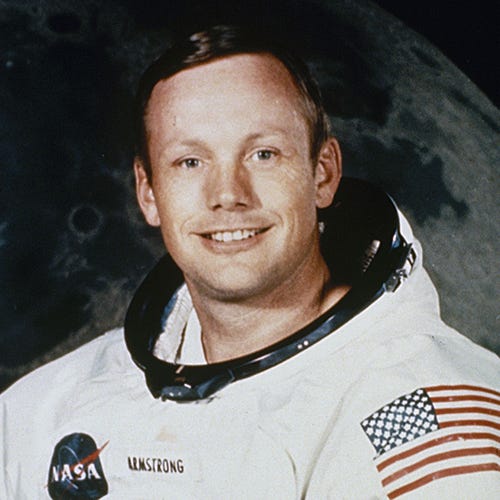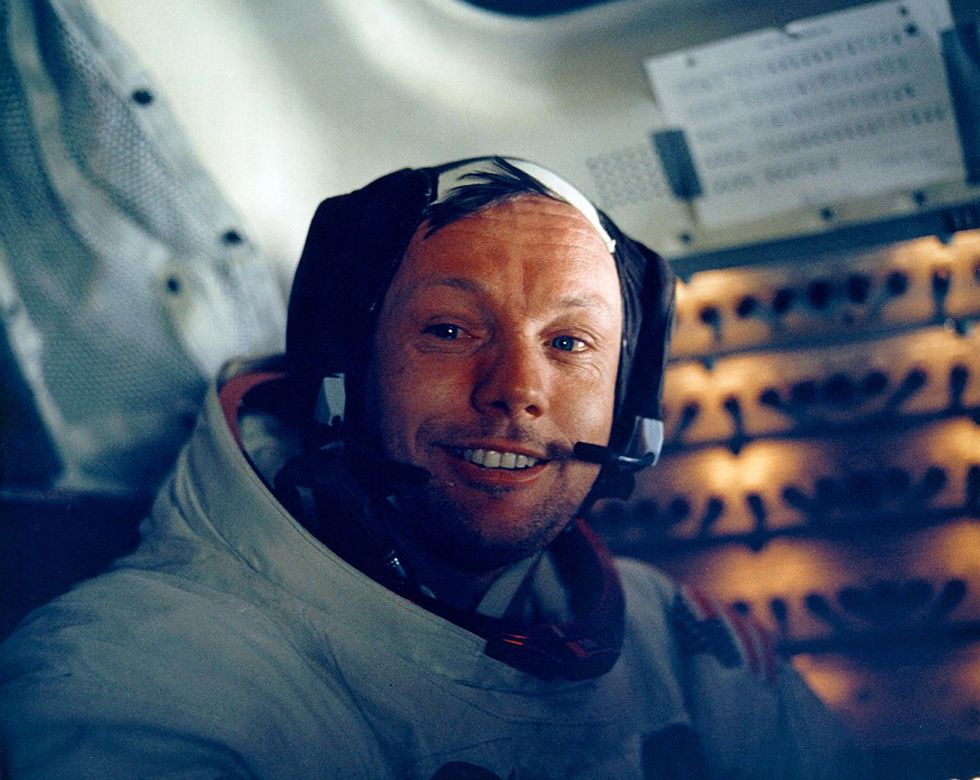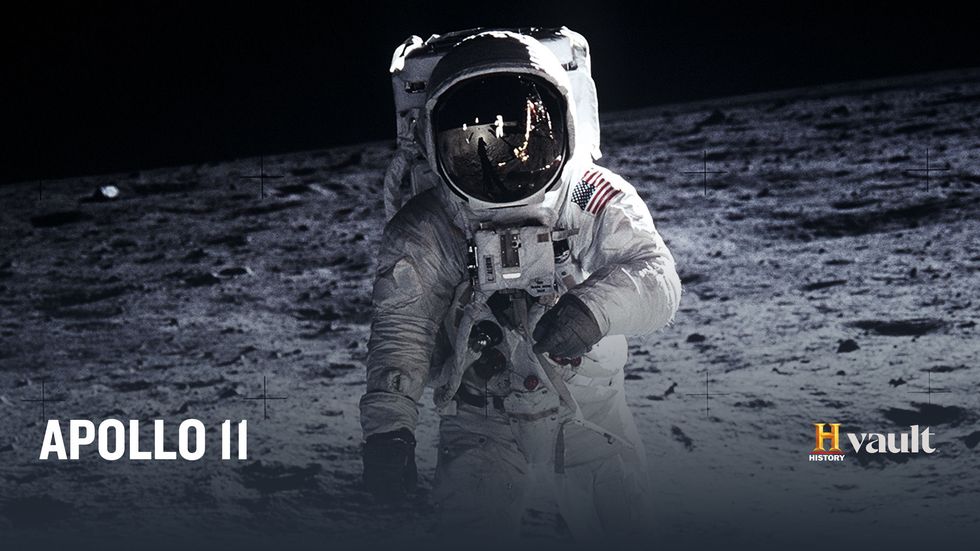You are viewing the article Neil Armstrong at Tnhelearning.edu.vn you can quickly access the necessary information in the table of contents of the article below.
Neil Armstrong, an American astronaut, was the first person to set foot on the moon. His historic step on July 20, 1969, during the Apollo 11 mission, marked a monumental achievement in human history and ignited the world’s fascination with space exploration. Armstrong’s contributions to the field of space travel go far beyond his iconic moonwalk, as he played a crucial role in advancing scientific knowledge, pioneering lunar exploration, and inspiring future generations of astronauts. This introduction will delve into the life, accomplishments, and legacy of this extraordinary man, whose name will forever be synonymous with humanity’s quest to reach the stars.

(1930-2012)
Who Was Neil Armstrong?
Neil Armstrong was born in Wapakoneta, Ohio, on August 5, 1930. After serving in the Korean War and then finishing college, he joined the organization that would become NASA. Armstrong entered the astronaut program in 1962, and was command pilot for his first mission, Gemini VIII, in 1966. He was spacecraft commander for Apollo 11, the first manned lunar mission, and became the first man to walk on the moon. Armstrong died shortly after undergoing heart surgery in Cincinnati, Ohio, in 2012.
Military Service
Armstrong developed a fascination with flight at an early age and earned his student pilot’s license when he was 16. In 1947, Armstrong began his studies in aeronautical engineering at Purdue University on a U.S. Navy scholarship.
In 1949, as part of his scholarship, Armstrong trained as a pilot in the Navy. He began seeing active service in the Korean War two years later and went on to fly 78 combat missions during this military conflict.
After earning his release from active duty in 1952, Armstrong returned to college.
Joining NASA
A few years later, Armstrong joined the National Advisory Committee for Aeronautics (NACA), which later became the National Aeronautics and Space Administration (NASA). For this government agency, he worked in a number of different capacities, including serving as a test pilot and an engineer. He tested many high-speed aircraft, including the X-15, which could reach a top speed of 4,000 miles per hour.
Astronaut Program
In 1962, Armstrong entered the NASA astronaut program. He and his family moved to Houston, Texas, and Armstrong served as the command pilot for his first mission, Gemini VIII. He and fellow astronaut David Scott were launched into the earth’s orbit on March 16, 1966. While in orbit, they were able to briefly dock their space capsule with the Gemini Agena target vehicle. This was the first time two vehicles had successfully docked in space. During this maneuver, however, they experienced some problems and had to cut their mission short. They landed in the Pacific Ocean nearly 11 hours after the mission’s start and were later rescued by the U.S.S. Mason.
Moon Landing
Armstrong faced an even bigger challenge in 1969. Along with Michael Collins and Edwin E. “Buzz” Aldrin, he was part of NASA’s first manned mission to the moon. The trio was launched into space on July 16, 1969. Serving as the mission’s commander, Armstrong piloted the Lunar Module to the moon’s surface on July 20, 1969, with Aldrin aboard. Collins remained on the Command Module.
At 10:56 p.m., Armstrong exited the Lunar Module. He said, “That’s one small step for man, one giant leap for mankind,” as he made his famous first step on the moon. For about two and a half hours, Armstrong and Aldrin collected samples and conducted experiments. They also took photographs, including their own footprints.
Returning on July 24, 1969, the Apollo 11 craft came down in the Pacific Ocean west of Hawaii. The crew and the craft were picked up by the U.S.S. Hornet, and the three astronauts were put into quarantine for three weeks.
Before long, the three Apollo 11 astronauts were given a warm welcome home. Crowds lined the streets of New York City to cheer on the famous heroes who were honored in a ticker-tape parade. Armstrong received numerous awards for his efforts, including the Medal of Freedom and the Congressional Space Medal of Honor.
Later Contributions
Armstrong remained with NASA, serving as deputy associate administrator for aeronautics until 1971. After leaving NASA, he joined the faculty of the University of Cincinnati as a professor of aerospace engineering. Armstrong remained at the university for eight years. Staying active in his field, he served as the chairman of Computing Technologies for Aviation, Inc., from 1982 to 1992.
Helping out at a difficult time, Armstrong served as vice chairman of the Presidential Commission on the space shuttle Challenger accident in 1986. The commission investigated the explosion of the Challenger on January 28, 1986, which took the lives of its crew, including schoolteacher Christa McAuliffe.
Despite being one of the most famous astronauts in history, Armstrong largely shied away from the public eye. In a rare interview for the news program 60 Minutes in 2005, he described the moon to interviewer Ed Bradley: “It’s a brilliant surface in that sunlight. The horizon seems quite close to you because the curvature is so much more pronounced than here on earth. It’s an interesting place to be. I recommend it.”
Even in his final years, Armstrong remained committed to space exploration. The press-shy astronaut returned to the spotlight in 2010 to express his concerns over changes made to the U.S. space program. He testified in Congress against President Barack Obama’s decision to cancel the Constellation program, which included another mission to the moon. Obama also sought to encourage private companies to get involved in the space travel business and to move forward with more unmanned space missions.
Taking this new decision, Armstrong said, would cost the United States its leadership position in space exploration. “America is respected for its contributions it has made in learning to sail on this new ocean. If the leadership we have acquired through our investment is simply allowed to fade away, other nations will surely step in where we have faltered. I do not believe that would be in our best interests,” he told Congress.
‘First Man’ Book and Movie
The iconic astronaut’s authorized biography, First Man: The Life of Neil A. Armstrong, was published in 2005. It was written by James R. Hansen, who conducted interviews with Armstrong, as well as his family, friends and associates.
The book was later adapted for a biopic, with First Man hitting theaters in 2018. Directed by Damien Chazelle, the film starred Ryan Gosling as Armstrong, with Claire Foy, Jason Clarke and Kyle Chandler in supporting roles.
Personal Life
Armstrong married Janet Shearon on January 28, 1956. The couple soon added to their family. Son Eric arrived in 1957, followed by daughter Karen in 1959. Sadly, Karen died of complications related to an inoperable brain tumor in January 1962. The following year, the Armstrongs welcomed their third child, son Mark.
Following his divorce from Janet in 1994, Armstrong married his second wife, Carol Held Knight.
Death & Controversy
Armstrong underwent a heart bypass operation at a hospital in Cincinnati, Ohio, in August 2012. Two weeks later, on August 25, 2012, the 82-year-old Armstrong died of complications from the operation.
Shortly after his death, his family released a statement: “For those who may ask what they can do to honor Neil, we have a simple request. Honor his example of service, accomplishment and modesty, and the next time you walk outside on a clear night and see the moon smiling down at you, think of Neil Armstrong and give him a wink.”
News of Armstrong’s death quickly spread around the world. President Obama was among those offering tributes to the late space pioneer, declaring: “Neil was among the greatest of American heroes — not just of his time, but of all time.”
Aldrin added: “I know I am joined by millions of others in mourning the passing of a true American hero and the best pilot I ever knew. My friend Neil took the small step but giant leap that changed the world and will forever be remembered as a landmark moment in human history.”
In July 2019, shortly after celebrations to mark the 50th anniversary of the moon landing, The New York Times reported on a previously unknown controversy surrounding the astronaut’s death. According to The Times, after Armstrong checked into Mercy Health — Fairfield Hospital with symptoms of heart disease in August 2012, doctors made a questionable decision to immediately perform bypass surgery. Afterward, when the removal of temporary wires for a pacemaker resulted in internal bleeding, another questionable move was made to bring Armstrong to a catheterization lab instead of directly to an operating room.
The hospital eventually reached a $6 million settlement with Armstrong’s surviving family, with the stipulation that the details surrounding the medical care and settlement remain private.
Watch a collection of episodes featuring Apollo 11 on History Vault
QUICK FACTS
- Name: Neil Armstrong
- Birth Year: 1930
- Birth date: August 5, 1930
- Birth State: Ohio
- Birth City: Wapakoneta
- Birth Country: United States
- Gender: Male
- Best Known For: Astronaut, military pilot and educator, Neil Armstrong made history on July 20, 1969, by becoming the first man to walk on the moon.
- Industries
- Space Exploration
- Science and Medicine
- Astrological Sign: Leo
- Schools
- University of Cincinnati
- Purdue University
- Death Year: 2012
- Death date: August 25, 2012
- Death State: Ohio
- Death City: Cincinnati
- Death Country: United States
Fact Check
We strive for accuracy and fairness.If you see something that doesn’t look right,contact us!
CITATION INFORMATION
- Article Title: Neil Armstrong Biography
- Author: Biography.com Editors
- Website Name: The Biography.com website
- Url: https://www.biography.com/scientists/neil-armstrong
- Access Date:
- Publisher: A&E; Television Networks
- Last Updated: March 31, 2021
- Original Published Date: April 3, 2014
QUOTES
- It’s a brilliant surface in that sunlight. The horizon seems quite close to you because the curvature is so much more pronounced than here on earth. It’s an interesting place to be. I recommend it. [Describing the moon.]
- That’s one small step for man, one giant leap for mankind.
- America is respected for its contributions it has made in learning to sail on this new ocean. If the leadership we have acquired through our investment is simply allowed to fade away, other nations will surely step in where we have faltered. I do not believe that would be in our best interests.
- The exciting part for me, as a pilot, was the landing on the moon.
- A century hence, 2000 may be viewed as quite a primitive period in human history. It’s something to hope for.
- There are great ideas undiscovered, breakthroughs available to those who can remove one of truth’s protective layers. There are places to go beyond belief.
- I think we’re going to the moon because it’s in the nature of the human being to face challenges. It’s by the nature of his deep inner soul. We’re required to do these things just as salmon swim upstream.
- Houston, Tranquility Base here. The Eagle has landed.
In conclusion, Neil Armstrong will forever be remembered as a true American hero and an icon of human achievement. His historic walk on the moon not only fulfilled a national goal but also served as a testament to the limitless potential of the human spirit. Armstrong’s courage, intelligence, and humility have inspired generations of aspiring astronauts and scientists. His legacy extends far beyond his famous words, “That’s one small step for man, one giant leap for mankind,” as he symbolizes the incredible feats that can be accomplished through dedication, determination, and the pursuit of knowledge. Neil Armstrong’s impact on space exploration and his significant contribution to humanity will continue to be celebrated and admired for years to come.
Thank you for reading this post Neil Armstrong at Tnhelearning.edu.vn You can comment, see more related articles below and hope to help you with interesting information.
Related Search:
1. “Neil Armstrong biography”
2. “Neil Armstrong quotes”
3. “Neil Armstrong moon landing”
4. “Neil Armstrong accomplishments”
5. “Neil Armstrong early life”
6. “Neil Armstrong education”
7. “Neil Armstrong NASA”
8. “Neil Armstrong spacesuit”
9. “Neil Armstrong photos”
10. “Neil Armstrong death”





